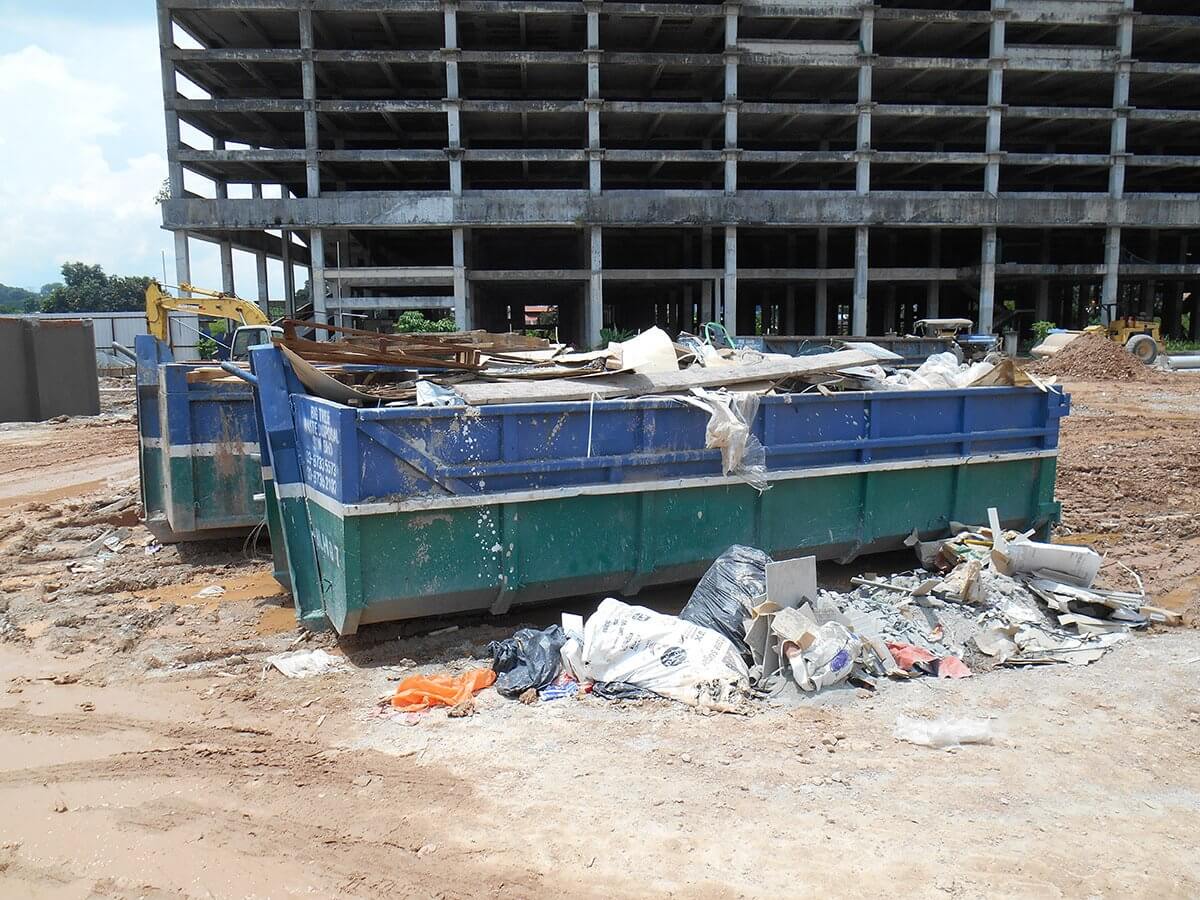If you’re involved in construction, you’ll be dealing with a range of waste materials. So how should you manage these materials? And what are the compliance issues? Understanding the rules and best-practice standards could help you avoid costly fines and even jail time. But it can also help you save money and run a more efficient site.
What’s construction waste?
Construction waste is the waste produced by demolition and building activities. Examples include concrete and bricks, asphalt, metals, timber, plastics, plasterboard, rock and excavation stone and soil and sand. Your waste could also include hazardous materials like asbestos, along with liquid waste. Many of these materials could be recycled. But if it’s not recyclable, then it’s waste that you need to dispose of lawfully.
Your responsibilities and consequences of illegal disposal
The federal government doesn’t directly regulate construction and demolition waste and regulation mainly falls under the purview of your state or territory government. Always check your state or territory laws to be clear about the rules and obligations. If you’re involved in a large-scale project generating substantial amounts of waste, consider collaborating with your local council and other authorities to ensure you’re compliant. Other than correct disposal, your obligations can cover providing information when asked to.
Penalties
Illegal disposal of your construction waste can mean serious jail time and large fines. For example, in New South Wales, illegally dumping waste can lead to as much as$5 million in fines or up to seven years in jail.
Disposing of different types of waste
Recycling and reusing what you can allows you tosave a considerable amount of money as you won’t need to pay for the landfill space. What you can’t recycle will need to go into landfill. This could include general waste, contaminated and hazardous waste, and liquids. The thing to understand about waste disposal is you need to classify it correctly so you can dispose of it at a facility authorised to receive that type of waste according to your state or territory laws.
General waste
General waste could include salvage materials that can’t be reused or recycled and are free from contamination or hazardous components. Recycling or reuse might be inappropriate because it’s energy or water inefficient. For this category of waste, you might decide landfill is the best solution. General waste is solid waste and is further broken into putrescible and non-putrescible waste. You need to make sure the landfill you’re using can lawfully accept these.
Contaminated or hazardous materials
Contaminated or hazardous materials can include asbestos, lead paint, treated timber, mercury products and others. Your state or territory could have general or specific rules about disposal of these. Here we look at the rules that apply in New South Wales in regards to two common examples of hazardous materials: asbestos and lead paint.
- Asbestos – In New South Wales, asbestos can only be sent to facilities that are lawfully able to receive this type of waste.
- Lead paint – In New South Wales, lead is classified as hazardous waste, so make sure you take it to a facility that’s lawfully authorised to accept hazardous waste. Tracking, transport, licensing, and levy regulations can apply to lead waste, so make sure you comply with these. Lead batteries are also subject to specific regulations in New South Wales.
Other materials to be aware of include radioactive materials, acid sulphate soils, treated timber, and mercury products. Special rules may apply to these. Note some types of contaminated waste could be reassessed and reclassified under an immobilisation approval so it can be disposed of at a landfill that accepts the reclassification category.
Liquids
In New South Wales, liquid waste should only be taken to waste facilities that can lawfully accept this type of waste. Note the liquid waste levy could apply to certain types of wastes that need to be tracked.
Best practice: implementing a waste management plan
The best way to maximise compliance and avoid the risk of penalties is to implement a waste management plan.
- Legislation – Work out the laws that will apply to the materials you’ll be using.Correctly classify your waste so you know the laws that apply and how you need to deal with it.
- Inventory –Conduct an inventory prior to demolition or construction to work out what you likely can recycle and reuse, and what you will need to dispose of. Estimate and calculate your waste volumes and start exploring waste facilities.
- Storage and transport –Establish how you’ll be storing reusable, recyclable, hazardous, and contaminated materials at every stage, from pre-construction to demolition and transport.
Whether you’re the owner or transporter of construction waste, you need to be aware of the applicable waste regulations so you can stay fully compliant. If you’re involved in a construction project, a waste management plan that helps you manage waste from start to finish is vital. With an effective plan, you could stay compliant as well as reduce waste-disposal costs.
Solution Plant Hire is a leading dry hire equipment company, offering 24/7 support, competitive pricing, and great customer service. Find out more about our customer success stories here or contact us for a discussion about your hire equipment needs.




